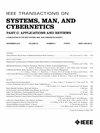改进了离线签名验证中稀疏数据问题的类统计估计
IEEE Transactions on Systems Man and Cybernetics Part C-Applications and Re
Pub Date : 2005-08-01
DOI:10.1109/TSMCC.2005.848155
引用次数: 28
摘要
稀疏数据问题是离线签名验证应用中的一个突出问题。由于使用少量的训练样本,类统计估计误差可能较大,导致验证性能下降。本文提出了两种改进统计估计的方法。第一种方法采用弹性失真模型,人为地为正版签名对生成额外的训练样本。这些额外的样本,连同原始的真实样本,被用来计算马氏距离阈值分类器的统计参数。另一种方法是采用正则化技术克服由于训练样本不足而导致的病态样本协方差矩阵的反演问题。建立了一个脊状估计器,为样本协方差矩阵的对角元素添加一些常数值。实验结果表明,当结合一组外围特征时,两种方法都能提高验证精度。通过定量分析验证了方法的有效性。本文章由计算机程序翻译,如有差异,请以英文原文为准。
Improved class statistics estimation for sparse data problems in offline signature verification
Sparse data problems are prominent in applications of offline signature verification. By using a small number of training samples, the class statistics estimation errors may be significant, resulting in worsened verification performance. In this paper, we propose two methods to improve the statistics estimation. The first approach employs an elastic distortion model to artificially generate additional training samples for pairs of genuine signatures. These additional samples, together with original genuine samples, are used to compute statistic parameters for a Mahalanobis distance threshold classifier. The other approach is to adopt regularization techniques to overcome the problem of inverting an ill-conditioned sample covariance matrix due to insufficient training samples. A ridge-like estimator is modeled to add some constant values for diagonal elements of the sample covariance matrix. Experimental results showed that both methods were able to improve verification accuracy when they were incorporated with a set of peripheral features. Effectiveness of the methods was validated by quantity analysis.
求助全文
通过发布文献求助,成功后即可免费获取论文全文。
去求助
来源期刊
自引率
0.00%
发文量
1
审稿时长
3 months

 求助内容:
求助内容: 应助结果提醒方式:
应助结果提醒方式:


